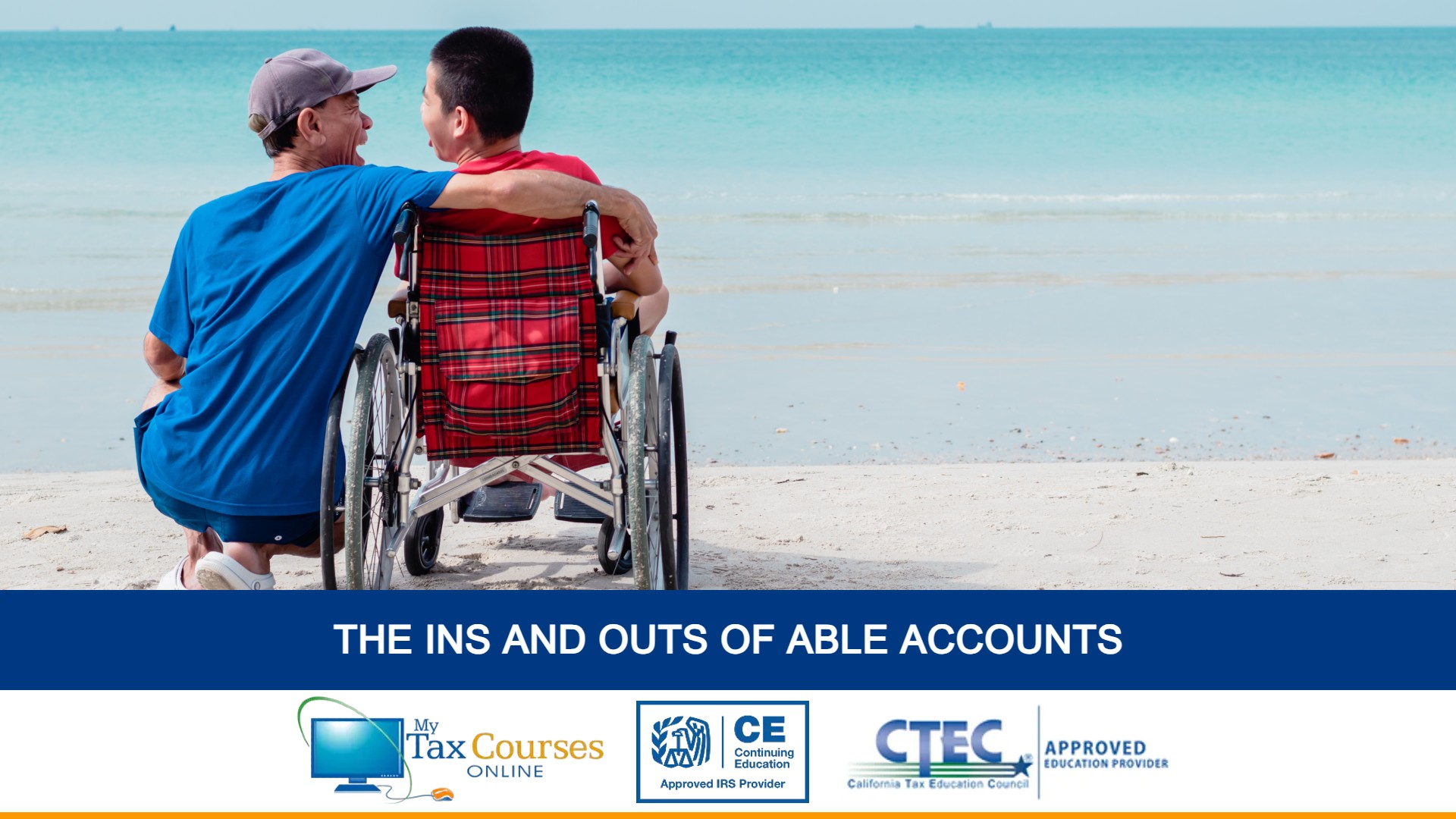Understanding ABLE accounts (Achieving a Better Life Experience) helps to provide informed guidance to your clients. ABLE accounts are a powerful financial tool for individuals with disabilities, offering tax advantages and flexibility while protecting eligibility for federal benefits. Here’s a comprehensive overview to help you navigate this specialized area of tax planning and support your clients effectively.
What Is an ABLE Account?
An ABLE account is a tax-favored savings account designed to support individuals with disabilities. These accounts allow eligible individuals to save for qualified disability expenses without jeopardizing their access to means-tested federal benefits, such as Supplemental Security Income (SSI) or Medicaid.
Key Features and Tax Implications of ABLE Accounts
- Eligibility Requirements
- The designated beneficiary must be blind or disabled, with the onset of the condition occurring before age 26.
- Beneficiaries must either receive benefits under Social Security Disability Insurance (SSDI) or SSI or provide a physician’s certification of their disability.
- Tip for Tax Preparers: Verify the client’s eligibility and keep documentation on file for audit purposes, particularly for physician-certified disabilities.
- Tax Benefits
-
- Tax-Free Earnings: Funds in an ABLE account grow tax-free and remain untaxed if used for qualified disability expenses.
- Qualified Expenses: These include costs related to health, education, housing, transportation, employment training, assistive technology, and more.
- Non-Qualified Distributions: Earnings on distributions used for non-qualified expenses are subject to income tax and a 10% penalty.
- Tip: Assist clients in keeping detailed records of distributions to ensure compliance and avoid penalties.
- Contribution Limits
- Annual contributions are capped at the federal gift tax exclusion amount (e.g., $18,000 in 2024).
- Employed beneficiaries may contribute additional amounts based on earned income up to the federal poverty line in their state of residence.
- Watch for: Contributions exceeding the annual or cumulative state limit can result in excise taxes and required returns of excess funds.
- Impact on Federal Benefits
- ABLE account balances below $100,000 don’t affect SSI benefits.
- Medicaid eligibility is generally unaffected, but states may seek recovery of Medicaid expenses after the beneficiary’s death.
- Advisory Note: Discuss state-specific Medicaid recovery policies with clients and advise on estate planning considerations.
Rollovers and Transfers
Tax preparers should be aware of rollover and transfer rules for ABLE accounts:
- Rollovers from 529 Plans: Funds can be rolled over tax-free from a 529 tuition account to an ABLE account for the same beneficiary or a qualifying family member.
- Program-to-Program Transfers: Entire balances can be transferred between ABLE accounts without tax implications.
- Tip: Ensure clients meet the 60-day deadline for rollovers to avoid taxation.
Compliance and Reporting
Be sure to familiarize yourself with the forms related to ABLE accounts:
- Form 1099-QA: Reports distributions from ABLE accounts.
- Form 5498-QA: Details contributions, fair market value, and account status.
- Tip: Cross-check these forms with client records to confirm tax-free distributions align with qualified expenses.
How You Can Help Your Clients
- Identify Opportunities: Inform clients with disabilities about the benefits of ABLE accounts and guide them in comparing state programs to select the best option.
- Plan Strategically: Work with clients to maximize annual contributions without exceeding limits and manage distributions for qualified expenses.
- Minimize Risks: Ensure compliance with contribution limits, maintain documentation, and provide guidance on avoiding penalties.
Why Understanding ABLE Accounts Matters
ABLE accounts represent an opportunity to provide specialized value to clients. By understanding the rules and nuances, you can help clients achieve financial independence while maintaining vital government benefits.
Stay informed, proactive, and ready to assist your clients in leveraging this essential tax-favored tool. With the right guidance, ABLE accounts can significantly improve the lives of individuals with disabilities and your client relationships.










